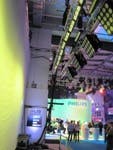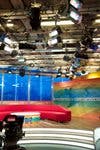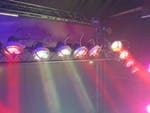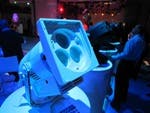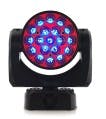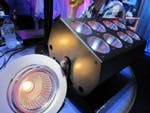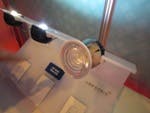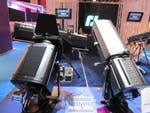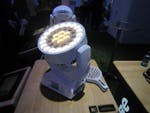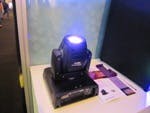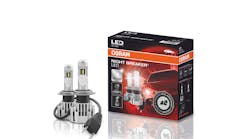However, said Middleton, manufacturers need to work on bringing down the cost of products, so power-reduction savings are not outweighed by the cost of purchase or hire. “They also need to fully reproduce all the features of controllability of beam shape and color enjoyed by current fixtures,” he said. “The ideal solution for many existing studios might be to unplug an existing tungsten bulb and plug in a new LED unit. Some manufacturers are taking that type of approach by either using an existing housing and converting it to take an LED engine, or else developing new back-ends to fit onto existing industry-standard lens assemblies. Others are producing brand new types of fixtures that don’t easily fit into traditional categories.”
The studio presenters sit in front of large windows with a view of St. Paul’s Cathedral in the background. However, the windows face east, and the sun rises as the show progresses. The first task was to control ambient lighting, and this was done using SPD SmartGlass, which can be automatically altered from clear to almost opaque, controlling glare and solar heat gain.
UK manufacturer i-Pix Ltd added to its range of entertainment lighting products with the distinctive Beamlight. Chris Ewington, CEO of i-Pix, said, “For six years we have wanted to displace the ubiquitous ACL beamlight, a regular fixture for concert touring and TV production, which typically consumes 240W, and with only a 15-hour lamp life.” LED Engin’s 12-die, 40W RGBW LZC enabled i-Pix to develop an LED-based replacement. Ewington said that i-Pix has produced “a new homogenized beamlight with the added benefit of being a focused device, weatherproof and capable of meeting arduous touring environments too.” The Beamlight contains a custom-designed parabolic reflector mounted onto a focusing system which enables a range of beam angles from +/-35 degrees down to a tight 5-degree beam.
UK-based GDS won PLASA awards for its ArcSystem of LED auditorium-lighting fixtures. The judges felt the system “will have a significant impact on the carbon footprint of the buildings it is utilized in, and provides an elegant replacement house-light system.” The photo shows 1-cell and 8-cell ArcSystem fixtures, which are available in 19-, 24- and 37-degree beam angles and with a range of color temperatures (2700K, 3000K, 4100K). The fixtures contain Bridgelux LED arrays, and the CRI is listed as over 92. The 150W 8-cell fixture has a light output of 10,000 lm.
Among the many LED-based products introduced by Robe was the Robin 600 PureWhite, containing 37 Cree MC-E multi-chip LEDs. The Smart White (SW) version (left) has variable color temperature from 2800–6300K. Robe also introduced the Robin 1200 LEDWash containing 61 multichip RGBW LEDs in 4 concentric rings.

